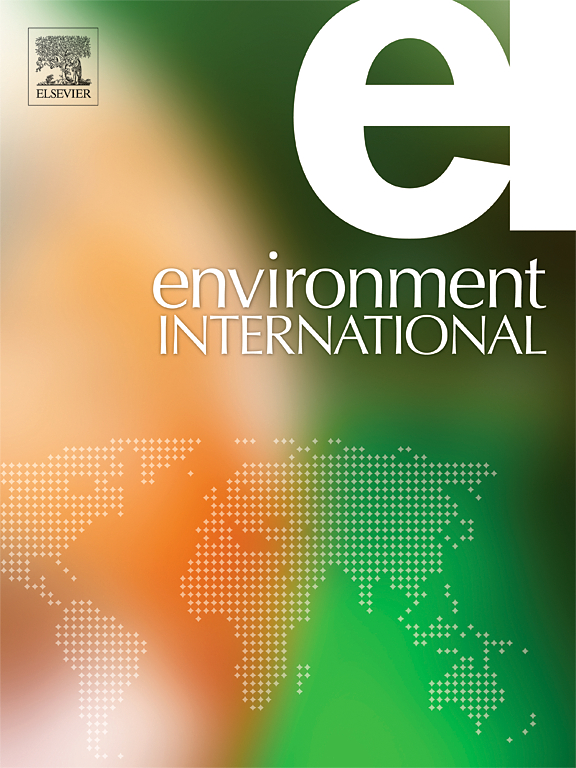Quantification of greenhouse gas emissions from a municipal solid waste incinerator using an uncrewed aerial vehicle
IF 10.3
1区 环境科学与生态学
Q1 ENVIRONMENTAL SCIENCES
引用次数: 0
Abstract
The accurate quantification of greenhouse gas emissions from waste treatment facilities is critical for effective climate change mitigation and regulatory compliance. Measurement-based methods are increasingly emphasized as essential for addressing uncertainties in emission estimates, with uncrewed aerial vehicles (UAVs) recognized for their flexibility and ability to capture spatially resolved data. This study evaluated CO emissions at a municipal solid waste incinerator using UAV monitoring with two quantification methods—the mass balance and inverse Gaussian methods. Ground-based wind data introduced significant uncertainty in CO emission quantification. Therefore, this study proposed using a mounted anemometer to capture high-resolution spatially-resolved wind data. The performance of the proposed quantification methods was assessed by comparing UAV-derived fluxes to reference quantification data to calculate errors, which were then compared across methods to evaluate accuracy. The mass balance method, incorporating spatially-resolved wind data, achieved a mean absolute percentage error (MAPE) of 37.34%, which was a marked improvement compared to the 64.32% MAPE using spatially-averaged wind data. Similarly, the inverse Gaussian method showed a lower MAPE of 46.45% using spatially-resolved wind data, compared to 54.97% using spatially averaged wind data. Additionally, the advantages of each method under varying conditions of wind variability were evaluated. This study demonstrates that spatially-resolved wind measurements with a mounted anemometer improve the accuracy of CO emission calculations. This approach highlights the importance of UAV-based monitoring of greenhouse gases emitted by waste management facilities.


使用无人驾驶飞行器量化都市固体废物焚化炉的温室气体排放量
准确量化废物处理设施的温室气体排放对于有效减缓气候变化和遵守法规至关重要。随着无人驾驶飞行器(uav)以其灵活性和捕获空间分辨率数据的能力而得到认可,基于测量的方法越来越被强调为解决排放估计不确定性的关键。本研究利用无人机监测,采用两种量化方法——质量平衡法和反高斯法,对城市固体垃圾焚烧炉的二氧化碳排放进行了评估。地面风数据在CO22排放量化中引入了显著的不确定性。因此,本研究建议使用安装的风速计来捕获高分辨率的空间分辨风数据。通过将无人机衍生的通量与参考量化数据进行比较来计算误差,从而评估所提出的量化方法的性能,然后将不同方法之间的误差进行比较以评估准确性。采用空间分辨风数据的质量平衡方法的平均绝对百分比误差(MAPE)为37.34%,与空间平均风数据的平均绝对百分比误差(MAPE)为64.32%相比有显著提高。同样,反高斯方法的MAPE比之前的54.97%的MAPE提高了46.45%。此外,还评估了每种方法在不同风变率条件下的优势。该研究表明,安装风速计的空间分辨风测量提高了CO22排放计算的准确性。这种方法强调了基于无人机监测废物管理设施排放的温室气体的重要性。
本文章由计算机程序翻译,如有差异,请以英文原文为准。
求助全文
约1分钟内获得全文
求助全文
来源期刊

Environment International
环境科学-环境科学
CiteScore
21.90
自引率
3.40%
发文量
734
审稿时长
2.8 months
期刊介绍:
Environmental Health publishes manuscripts focusing on critical aspects of environmental and occupational medicine, including studies in toxicology and epidemiology, to illuminate the human health implications of exposure to environmental hazards. The journal adopts an open-access model and practices open peer review.
It caters to scientists and practitioners across all environmental science domains, directly or indirectly impacting human health and well-being. With a commitment to enhancing the prevention of environmentally-related health risks, Environmental Health serves as a public health journal for the community and scientists engaged in matters of public health significance concerning the environment.
 求助内容:
求助内容: 应助结果提醒方式:
应助结果提醒方式:


